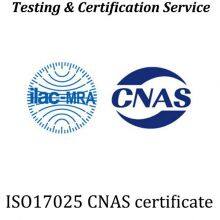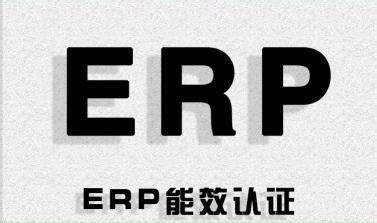Home > Products > EU Certificate > EU ERP Directive/(EU) 2023/826/Energy Efficiency Ecodesign Directive (EU) 2023/1670 and Energy Efficiency Labeling Directive (EU) 2023/1669
EU ERP Directive/(EU) 2023/826/Energy Efficiency Ecodesign Directive (EU) 2023/1670 and Energy Efficiency Labeling Directive (EU) 2023/1669
- 10000 Piece / Pieces per Month
- T/T L/C PayPal D/P Western Union Other
You May Like
-
UKCA Certification/UKCA Certification Mark
-
South Korea KC Certification/South Korea KCC Certification
-
South Korea KC Certification /KC Safety / KC EMC and RF / MEPS
-
India BIS Certification/BIS Compulsory Certification Product List
-
India WPC Certification
-
Thailand TISI Certification/TISI Certification Application Process
Product Description
Basic Introduction
In order to improve the environmental performance of energy-consuming products and control ecological environmental pollution. On October 31, 2009, the EU officially issued the Directive 2009/125/EC on Ecological Requirements for Energy-Related Products, namely the ErP (Energy-related Products) Directive "Directive on Establishing a Framework for Ecodesign Requirements for Energy-Related Products", which is a rewritten directive of the EuPhoria (Energy-using Products) Directive (2005/32/EC) and came into effect on November 10, 2009.
ErP Directive
In order to improve the EuP Directive 2005/32/EC and further expand its scope, the EU officially issued the Directive 2009/125/EC on Ecological Requirements for Energy-related Products on October 31, 2009. This directive stipulates the framework for eco-design requirements for energy-related products. From November 20, 2009, the ErP Directive 2009/125/EC replaced the original EuP Directive (2005/32/EC, 2008/28/EC).
The original IM based on the EuP Directive will be converted to the IM of this directive at the same time.
ErP Directive Product Scope
Like EuP, the ErP Directive does not apply to means of transport for people and goods.
In addition to the energy-consuming products covered by the original EuP Directive: simple set-top boxes, televisions, external power supplies, fluorescent lamps without integral ballasts, gas discharge lamp ballasts, and lamps using such lamps and ballasts, non-directional household lamps, directional lamps, LED lamps, lamps, lamp controllers (including LED drivers and electronic transformers), dimmers and sensors, motors, household refrigeration appliances, circulation pumps, it also includes other energy-saving products such as windows, insulating materials or water-using products (such as shower heads, faucets, etc.).
ErP Directive Implementation Rules
The ErP Directive is not a directive for product requirements, but only a framework directive. In accordance with the relevant provisions of this directive, the EU further formulated directives on the eco-design requirements that certain types of energy-consuming products must comply with, called "Implementing Measures", referred to as IM. The implementation rules that have been promulgated and implemented are as follows:
1. Eco-design requirements for standby power consumption of electronic and electrical equipment for home and office use (No 1275/2008) were issued in December 2008 and implemented on January 7, 2010.
2. Eco-design requirements for simple set-top boxes (No 107/2009) were issued in February 2009 and implemented on February 25, 2010.
3. Eco-design requirements for non-directional household lamps (No 244/2009) were issued in March 2009 and implemented on September 1, 2009.
4. Eco-design requirements for fluorescent lamps without integrated ballasts, high-intensity gas discharge lamps, their ballasts and lamps (No 245/2009) were issued in March 2009 and implemented on April 13, 2010.
5. The eco-design requirements for external power supplies (No 278/2009) were issued in April 2009 and implemented on April 27, 2010.
6. The eco-design requirements for electric motors (No 640/2009) were issued in July 2009 and implemented on June 16, 2010.
7. The eco-design requirements for independent sealless circulators (No 641/2009) were issued in August 2009 and implemented on January 1, 2010.
8. The eco-design requirements for televisions (No 642/2009) were issued in July 2009 and implemented on January 7, 2010.
9. The eco-design requirements for household refrigeration equipment (No 643/2009) were issued in July 2009 and implemented on July 1, 2010.
10. Household washing machines (No 1015/2010) were issued in November 2010 and came into force on December 1, 2011.
11. Household dishwashers (No 1016/2010) were issued in November 2010 and came into force on December 1, 2011.
12. Household clothes dryers (No 932/2012) were issued in October 2012 and came into force on November 1, 2013.
13. Motor-driven fans with an input power range between 125 W and 500 kW (No 327/2011) were issued in April 2011 and came into force on April 6, 2011.
14. The eco-design requirements for directional lamps, LED lamps and related equipment (No 1194/2012) were issued in December 2012 and implemented on September 1, 2013.
ErP certification steps
1. Conformity assessment
According to the requirements of the ErP Directive, manufacturers can choose one of the two assessment modes of "internal design control" (Annex IV of the ErP Directive) or "environmental management system" (Annex V of the ErP Directive) for assessment.
2. Organize and form technical documents (TDF)
· Manufacturers must form technical documents
· Technical documents should include information on design, manufacturing, operation and final disposal of products
· Details will be clarified through the implementation measures of each product
3. Issue a declaration of conformity (DoC)
· Basic information
· Directives and standards to comply with
4. Label CE mark
· Coordinated standard testing-EMC, LVD, etc.
· Label CE mark
Contact Us

- SHENZHEN LCS COMPLIANCE TESTING LABORATORY LTD.
- Contact nameleo tu Chat Now
- Address1&2/F, Building A, Juji Industrial Park, Yabianxuezhiwei, Shajing Street, Bao'an District, Shenzhen, Guangdong, China, Shenzhen, Guangdong
Product Categories
New Products
-
Philippines NTC Certification/Philippines Wireless Product Certification
-
Thailand NBTC Certification/Thailand NBTC Certification Product Classification
-
Philippines ICC Certification/Necessity of ICC Certification
-
Singapore IMDA certification
-
Malaysia SIRIM Certification/SIRIM Certified Product Scope
-
Singapore PSB Certification/Singapore Safety Mark
-
Indonesia SDPPI Certification/Indonesian Wireless Product Certification
-
UAE ECAS Certification/UAE Compulsory Certification
-
UAE TRA Certification/UAE Wireless Product Certification
-
Indonesia SNI Certification/Indonesian Safety Certification
-
Japan Giteki Certification/TELEC Certification
-
Vietnam MIC Certification/Vietnam Wireless Product Certification
-
Australian RCM Certification/Australian RCM Registration
-
Australian SAA Certification/Australian Safety Certification
-
Australian Energy Efficiency GEMS Certification
-
Brazil ANATEL Certification/Brazil Compulsory Certification/Brazil Voluntary Certification
-
Brazil INMETRO Certification/Brazil Certification
-
Argentina ENACOM Certification/Argentina Wireless Product Certification
-
Argentina S-MARK Certification/IRAM Certification
-
Chile SUBTEL Certification/Chile Certification
-
Chile SEC Certification/Chile Compulsory Certification
-
Peruvian MTC Certification/Ministerio de Telecomunicaciones
-
Colombia CRC Certification/República de Colombia
-
Argentina IRAM Certification/IRAM Certification Application Process
Recommended Products
- Energy storage converter GB/T 34133 report, energy storage converter GB/T 34133 test, energy storage converter GB/T 34133 certification
- GB 42296 test for chargers for electric bicycles, CCC certification for chargers for electric bicycles
- Photovoltaic inverter IEC62109 report
- Grid-connected photovoltaic inverter EN50530 testing
- Test content of inverter grid-connected standard EN 50549-10
- VR virtual glasses US FCC test report standards and requirements
- How to get the FCC-ID certificate for readers and writers?
- How to apply for the CE certification of electronic doorbell
- Learning Machines Exported to the U.S. Require FCC Certification
- The IEC 62133 standard applies to the following types of batteries: Lithium-ion and lithium-polymer batteries used in portable electronic
- fire test requirements of BS476-7
- ASTM E119 fire resistance test
Find Similar Products By Category
- Business Services > Certification, Inspection & Credit Management > Product Certification
- Please Enter your Email Address
- Please enter the content for your inquiry.
We will find the most reliable suppliers for you according to your description.
Send Now-
 leo tu
Welcome to my shop, I'm glad to serve you. Please feel free to send me any questions you may have.
leo tu
Welcome to my shop, I'm glad to serve you. Please feel free to send me any questions you may have.
Your message has exceeded the limit.
- Contact supplier for lowest price
- Customized Request
- Request Sample
- Request Free Catalogs
Your message has exceeded the limit.
-
Purchase Quantity
-
*Sourcing Details
Your inquiry content must be between 10 to 5000 characters.
-
*Email
Please enter Your valid email address.
-
Mobile



